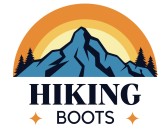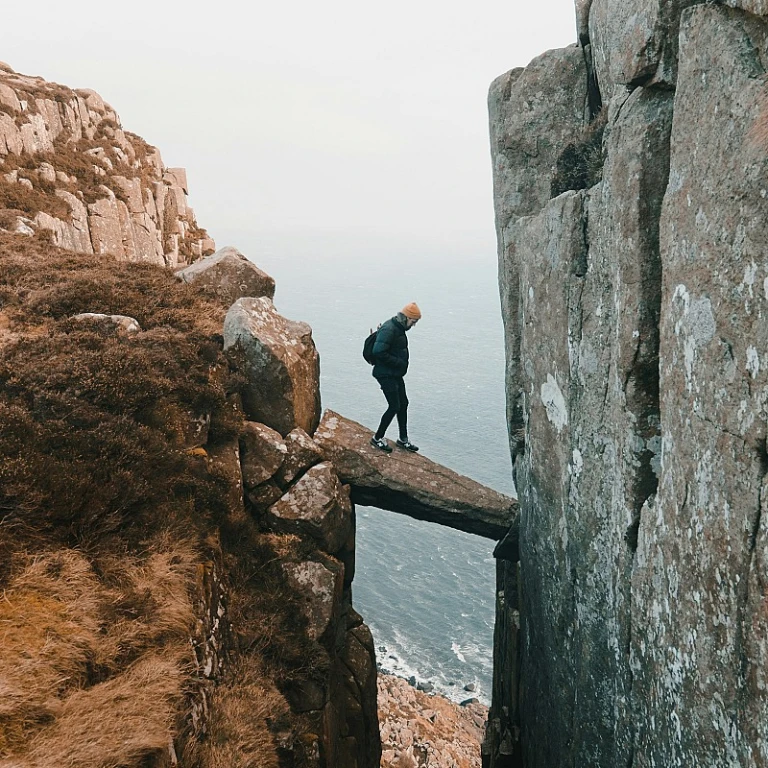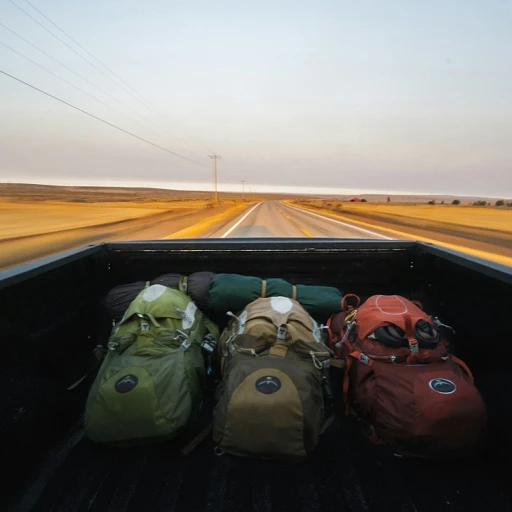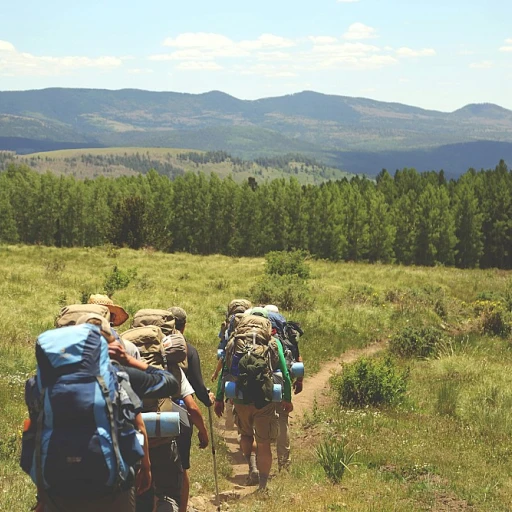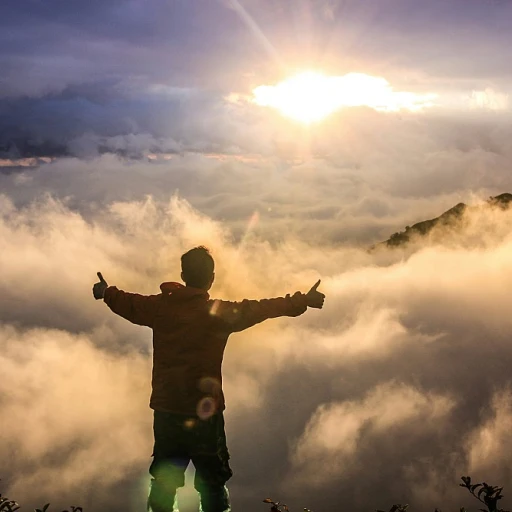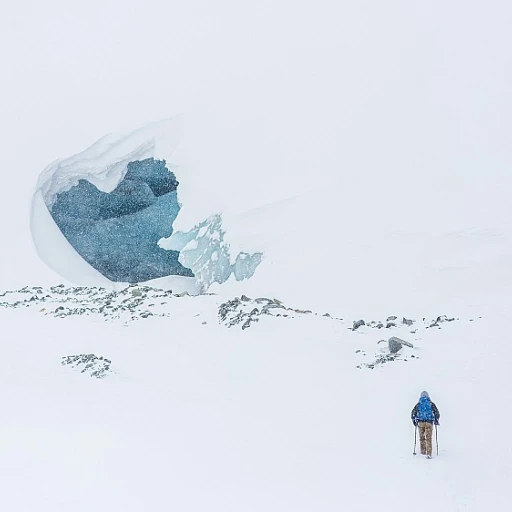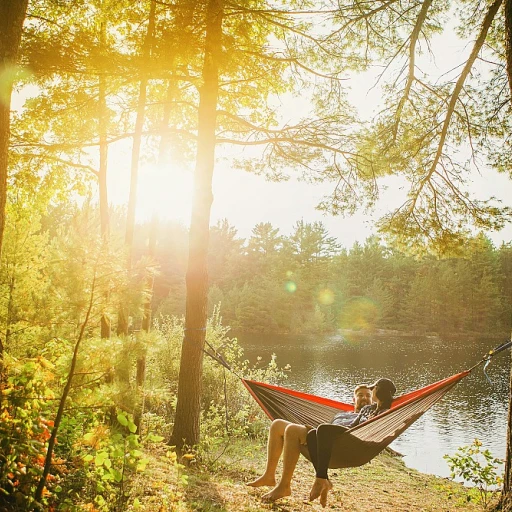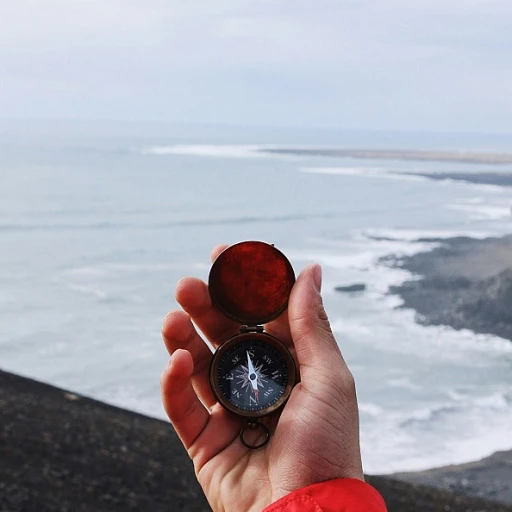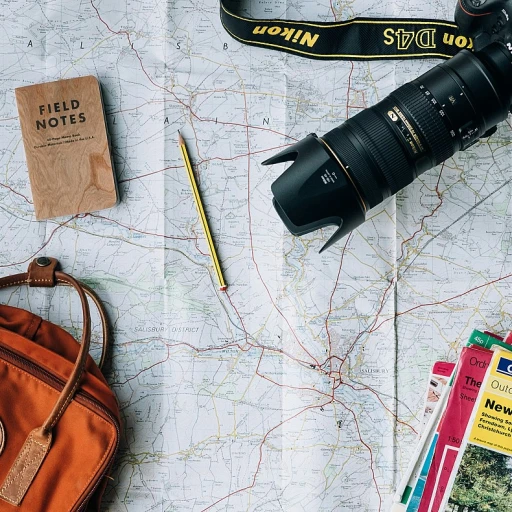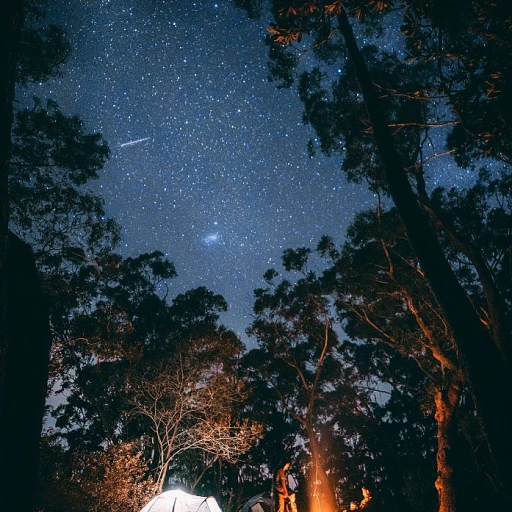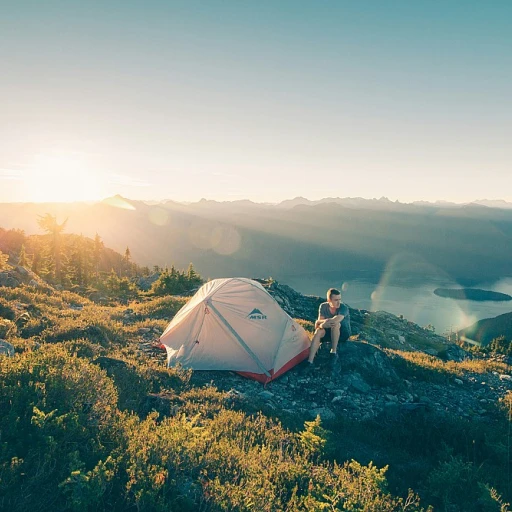The perfect day trip from Denver to Rocky Mountain National Park
Why Denver is the perfect launch point
If you’re in Denver and have a day to spare, then Rocky Mountain National Park should be at the top of your list. Located just around 80 miles northwest of Denver, it’s a quick 1.5 to 2-hour drive depending on traffic. Thanks to its convenient proximity, locals and tourists alike highly recommend making the city your base for exploration.The simple logistics
Getting from Denver to Rocky Mountain National Park is straightforward. You can rent a car, join a guided tour, or even use the shuttle services. The hiker shuttle from Estes Park is particularly popular, reducing the hassle of finding parking inside the park, especially during peak seasons. Check out the Top 10 hikes in Colorado while planning your trip!What's the drive like?
Honestly, the drive itself is a treat. As you leave Denver, the cityscape gives way to picturesque mountain views. You’ll pass through quaint towns like Boulder and Estes Park, each offering their own unique charms. Be sure to stop at Estes Park Visitor Center for maps, tips, and a bathroom break before you hit the trails.A day trip that packs a punch
One major draw of Rocky Mountain National Park is its diversity of attractions suited for a single day. From mesmerizing landscapes to wildlife sightings, there’s no shortage of activities. Whether you’re a casual stroller or an avid hiker, you’ll find something that excites you. And let’s not forget those iconic spots like Bear Lake and Trail Ridge Road. By choosing Denver as your starting point, you’re setting yourself up for easy access and an adventure-packed day in one of the nation's most beloved parks. Whether you're traveling solo, with friends, or family, this is one trip you'll recount fondly for years to come. What follows is a taste of the must-see spots, trails suited for all levels of hikers, and tips on how to make the most of your visit.Must-see spots in Rocky Mountain National Park
Alpine visitor center
One of the must-see spots in Rocky Mountain National Park is the alpine visitor center. Standing at an elevation of 11,796 feet, this visitor center offers panoramic views of the alpine tundra. Open seasonally, generally from late May through mid-October, it provides exhibits, an information desk, and a gift shop where you can snag some cool souvenirs.
Bear lake area
The bear lake area is another must-visit destination. Bear Lake is a beautiful, serene lake surrounded by a paved trail, making it accessible for hikers of all levels. The trail offers breathtaking views of the surrounding mountains and is particularly stunning during the fall when the leaves change colors. This spot is perfect for a peaceful day of easy hiking and picnicking.
Trail ridge road
No trip to Rocky Mountain National Park is complete without a drive along Trail Ridge Road. This awe-inspiring road stretches over 48 miles, connecting Estes Park on the east to Grand Lake on the west. It reaches an elevation of 12,183 feet and is the highest continuous paved road in the United States. The pullouts along the way are great for photo opportunities, offering unparalleled views of the Rockies.
Moraine park
Moraine Park is a picturesque valley in the park that's worth exploring. Known for its meadows filled with wildflowers and abundant wildlife, it's a great spot for both novice and experienced hikers. The Big Thompson River runs through the park providing ample fishing opportunities, or just a lovely setting for a picnic.
Sprague lake
Sprague Lake is a charming spot, ideal for a relaxed outing. The lake has a wheelchair-accessible 0.5-mile trail that offers stunning reflections of the Continental Divide. It's also a popular fishing spot, where anglers might catch some trout. This makes it a fantastic family-friendly destination.
To get more ideas on the best trails to explore, check out the top 10 hikes in Colorado.
Hiking trails for all levels
Easy trails for beginners
If you're just getting started with hiking, don't worry! Rocky Mountain National Park has plenty of easy trails perfect for beginners. Start with the tranquil Bear Lake loop that spans just a mile and offers stunning views of the lake and surrounding peaks. With its flat terrain, it's perfect for all ages and promises beautiful reflective water views against the backdrop of the mountains.
Moderate trails for more challenges
If you want to kick it up a notch, try the Emerald Lake hike. This 3.6-mile round trip trail provides a moderate challenge with some elevation gain, but the pay-off is worth every step. You'll pass Nymph Lake and Dream Lake before reaching the striking Emerald Lake. Don't rush it; the picture-perfect views at each stop will have you pausing for plenty of photos. Check out our guide to weather considerations to ensure your hike goes smoothly.
Difficult trails for seasoned hikers
For those who are up for a more strenuous adventure, the Sky Pond trail is a must. This 8.5-mile round trip is popular among experienced hikers for good reason. The route takes you past Alberta Falls, through the Loch Vale, and up to Lake of Glass, ending at the spectacular Sky Pond. It's challenging due to the steep and rocky segments and sometimes requires scrambling, but the breathtaking alpine scenery is well worth the effort. Make sure you're prepared, as this isn't a walk in the park.
Iconic trails you can't miss
One of the most iconic trails in Rocky Mountain National Park is the Longs Peak trail. While definitely not for the faint of heart, it's a bucket-list hike for seasoned hikers. Standing at 14,259 feet, Longs Peak is the park's only fourteener and offers spectacular summit views. The Keyhole Route, which spans 14 miles round trip, is the most popular way to the top. Remember to start early, preferably around 3 a.m., to avoid afternoon thunderstorms common in summer months.
Tips for all hikers
When hiking, remember the basic rules of trail etiquette: stay on the trail, pack out all trash, and yield to uphill hikers. Always check trail conditions before heading out and be aware of your surroundings and the move. Even on easier trails, it's essential to carry enough water and snacks and to let someone know your planned route.
Wildlife encounters and safety tips
Spotting majestic wildlife
If you're keen on encountering wildlife, you've picked the right spot. Rocky Mountain National Park is home to diverse and stunning wildlife that makes the trip from Denver truly unforgettable. From elk and mule deer to black bears and moose, the chances of seeing these creatures in their natural habitat are significant. Fun fact: the park has a dense concentration of elk, with approximately 3,200 individuals spotted during peak autumn months (source: NPS.gov).
Stay alert and safe
Safety is key when hiking in areas inhabited by wildlife. Make sure to carry bear spray and be aware of bear activity, especially when traveling through Bear Lake Road or Trail Ridge Road. To minimize risk, experts like wildlife biologist Lee Ortega suggest making noise while hiking to avoid surprising a bear. Keeping food securely stored and packed up also helps in preventing unwanted encounters.
Best spots for wildlife viewing
When it comes to the best spots to see wildlife, Moraine Park and Kawuneeche Valley rank high on the list. Moraine Park is particularly known for its elk viewing opportunities, while Kawuneeche Valley offers a serene setting to spot moose grazing by the Colorado River. For bird enthusiasts, the alpine regions near Trail Ridge Road are a haven for birds of prey.
Timing is everything
Early mornings and late evenings are the best times to see animals. Studies suggest nearly 70% of wildlife sightings happen during these periods. Besides, the cooler temperatures make for a more pleasant hiking experience. Once you've spotted some wildlife, keep a safe distance—park regulations recommend staying at least 75 feet away from most animals and 120 feet away from predators like bears.
Best times to visit and weather considerations
The importance of timing your visit
When planning your journey from Denver to Rocky Mountain National Park, timing can make or break your experience. Each season brings different considerations and highlights to keep in mind.
Spring and summer: lush landscapes and wildlife spotting
Spring (late May to early June) is when the park's meadows burst into flowering displays, and rebounding wildlife, like elk and deer, can be seen more frequently. However, snow can linger on higher trails, so always check trail conditions before heading out.
Summer (mid-June to August) offers the most reliable weather for your adventure. Expect fuller hiking trails, particularly popular spots like Bear Lake and Trail Ridge Road, but the extended daylight hours mean you can cover a lot more ground. According to the National Park Service, summer is the peak season, with over 60% of annual visitors hitting the park during this period. Early mornings or late evenings are the best times to avoid the crowds and spot wildlife.
Fall: vibrant foliage and migrating animals
Fall, particularly September and early October, is prime time for leaf-peeping as aspens turn vibrant gold. According to Colorado.com, this period is also ideal for witnessing the elk rut, where male elk bugle and compete for mates. Cooler temperatures make for pleasant hiking, but keep an eye on the weather, as snow can start falling as early as October.
Winter: serene landscapes and fewer crowds
Winter (November to April) transforms the park into a snowy wonderland. While this season sees fewer visitors, it offers peaceful experiences like snowshoeing around Bear Lake or cross-country skiing in Moraine Park. The roads and visitor centers, particularly Trail Ridge Road, often close due to snow, so planning is essential. The official Rocky Mountain National Park website (nps.gov) has detailed updates on road conditions and closures.
Weather considerations and preparation tips
Regardless of the season, the weather in Rocky Mountain National Park can be unpredictable. Afternoon thunderstorms are common in summer, while temperatures can drop suddenly in fall and winter. Dress in layers and always carry rain gear when you set out. A study by the National Weather Service found that sudden weather changes caught unprepared hikers off guard, leading to emergency situations. So, it's crucial to be prepared for anything.
Picnic spots and dining options
Perfect picnic spots for every hiker
When you're on a hike from Denver to Rocky Mountain National Park, having a well-planned picnic can make the day even more memorable. A popular spot is Bear Lake, an area known for its stunning scenery. After tackling the Bear Lake Trail, set up your picnic with a view of the sparkling lake framed by towering mountains. This spot offers tranquility and photo-worthy moments.If you prefer being surrounded by wildlife, Moraine Park is a fantastic choice. It's a spacious meadow where you can often spot elk grazing, especially during the fall rut. Setting up a picnic here not only provides dramatic views but also an up-close encounter with the park's wildlife – a truly unique experience.
Heading over to Trail Ridge Road, the Gore Range Overlook area is another excellent picnic destination. It sits at a higher elevation, so you get to enjoy cooler temperatures and panoramic vistas of the Rocky Mountains. Just remember, higher altitudes can mean sudden weather changes, so be prepared.
For those traveling with family or looking for a more laid-back setting, Sprague Lake is an ideal location. It's accessible and has picnic tables as well as restrooms nearby. Kids can enjoy the easy trail around the lake, making it a stress-free spot for a family outing.
Lastly, don't miss out on the Grand Lake area, nestled at the western entrance of the park. It offers picturesque views and a scenic drive to nearby cafes and shops if you decide to mix your day of hiking with a taste of local dining.
Dining options close to nature
If you're looking to extend your day trip from Denver to Rocky Mountain National Park with a hearty meal, Estes Park is the go-to spot. This charming town offers a variety of dining options, from casual cafes to fine dining restaurants. Popular choices include the Rock Inn Mountain Tavern, known for its rustic ambiance and live music, and The Grubsteak Restaurant, where you can grab a bison burger to refuel after a long hike.While in Estes, don't pass up the chance to visit The Stanley Hotel – yes, the one that inspired Stephen King's *The Shining*. Although famous for its ghost tours, it also boasts a fine dining experience at Cascades Restaurant, offering delicious fare with a historical twist.
Another excellent dining location is just beyond the park's boundary in the town of Grand Lake. Known for its quaint atmosphere, you can find eateries like Sagebrush BBQ & Grill, where you can enjoy a flavorful barbecue meal. This area prides itself on its lake views and welcoming vibes, so you can relax and reflect on your day's adventures by the water.
For hikers who want a quick yet delicious meal, consider stopping by the visitor centers. The Alpine Visitor Center, for instance, has a café where you can grab a snack and enjoy the high-altitude views. It’s also a great place to rest and gear up for more hiking or the drive back to Denver.
For more details on planning your meal after a hike, check out this guide to dining and adventure at Bear Lake Colorado your-unforgettable-outdoor-adventure.
Expert insights and local tips
Insider tips for a memorable visit
When planning your day trip from Denver to Rocky Mountain National Park, having some local insights can drastically enhance your experience. Consider utilizing the hiker shuttle services, particularly during peak seasons. This helps alleviate parking woes at popular spots like Bear Lake.
Julia Stevens, a local guide with over 15 years of experience, recommends arriving early to beat the crowds and secure a spot at prime locations. "The park gets quite busy, especially during weekends and holidays. Arriving by 7 AM can make a world of difference," she says.
For a unique perspective, volunteer naturalist tours offer fascinating insights into the park’s history, geology, and ecology. These tours are often free and give you a chance to ask questions about the flora and fauna you encounter along the trails.
Best routes and timings
Marissa Lopez, an experienced trekker, suggests taking the Trail Ridge Road for breathtaking vistas and a less strenuous drive. "It's one of the highest paved roads in North America, and the views are simply stunning", she shares. However, note that the road is usually closed from October to May due to snow.
If you're in Estes Park, another must-visit spot is the historic Stanley Hotel. A quick detour can provide some cool historical context before you embark on your wilderness adventure. For wildlife enthusiasts, the Moraine Park area is a hotspot for spotting elk and bighorn sheep, especially in late September and early October.
Practical advice from locals
Always carry layers, as the weather can change rapidly. This is especially crucial if you plan to visit the Alpine Visitor Center, where temperatures are often cooler due to its higher elevation. Don't forget your sunscreen and plenty of water, as dehydration can sneak up on you at higher altitudes.
Dining options within the park are limited, so packing a picnic is advisable. Moraine Park and the Bear Lake area offer picturesque settings for a meal. However, be bear-aware: secure all food in bear-proof containers and follow park guidelines to ensure both your safety and the wellbeing of the wildlife.
Stay informed and prepared
Lastly, keep an eye on park alerts and trail conditions. The National Park Service website provides up-to-date information on trail closures and weather advisories, which can help you plan your day efficiently. Utilizing the visitor centers for maps and last-minute advice can also prove invaluable.
Make sure to enjoy your visit, take lots of pictures, and respect the natural beauty and wildlife of Rocky Mountain National Park.
